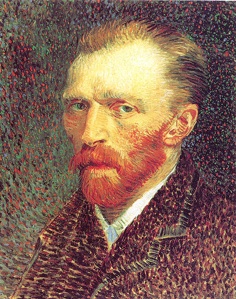Imagine the classic image of the troubled artist; filled with angst and pain, tormented by something-or-other, but pulls out these classic works of art that inspire people for generations. How does this stereotype fit in with studies showing that creativity is enhanced through positive moods and emotions? (1) Is there a contradiction here? No, there’s just a slight distinction that needs to be made between creativity and originality.
Originality
Originality refers to the production of a new idea, without any particular care for whether these ideas will be useful or not. So when you’re brainstorming and trying to turn out as many possibilities as you can, psychologists would call this originality, not creativity. It’s originality that is enhanced by positive moods. So when people are brainstorming ideas, good moods will help them come up with more ideas, all other things being equal. Remember the golden rule of brainstorming though: no idea is a bad idea. Just keep them coming and write them all down, review and analysis can come later.

Van Gogh – troubled but creative
Originality is usually tested through divergent thinking exercises, like the ‘Uses of a Brick’ test, where the researchers simply ask people to come up with as many uses for a brick as they can – no matter how silly. We tested this in class once, half of the class left to another room and watched a sad youtube clip, and the rest of us watched a happy one. Both groups did the Uses of a Brick exercises, those of us who watched the happy clip came up with more uses for a brick (my favourite one was ‘combing your hair’) – so the theory held up to our test.
Creativity
So what’s creativity then? Well, while originality is judged by the sheer number of ideas one can come up with, creativity places a more stringent criteria on these ideas – they not only have to be original, they have to be worthwhile or useful. So creativity is more beneficial than originality, but unfortunately it’s harder to measure, because the usefulness of an idea is not always immediately apparent.
This is how creativity and originality are defined in psychology. This does not imply good moods are bad for creativity – only that there’s more going on in creative achievement than the simple generation of original ideas. Other things are being channelled into the work which make it useful, and of course when you’re talking about usefulness, difficult questions arise (useful for what? For whom?). But all the other factors involved mean that even although the tormented artist’s originality might be lowered to some degree due to less frequent positive emotions, this doesn’t necessarily mean she will also have lowered creative output.
Reference:
(1) Fredrickson, B. L. (2001). The Role of Positive Emotions in Positive Psychology. American Psychologist. 56 (3), 218-226.
Comments
7 responses to “Creativity and Originality”
This is an interesting distinction. I can see how this would be true. After all there are plenty of novelty goods out there that are extremely original, well designed, and engineered…but the value level is low.
Totally, sometimes simple originality seems to be enough to sell a novelty product, regardless of whether it has any use value whatsoever. “Oh look at that! That’s different! I don’t want or need it, but I’ll have it anyway!”
My hunch from my own personal experience is that being a ‘suffering artist’ gives you a certain amount of clarity and single mindedness that shuts out all the other crap in life which allows you to completely focus on your ‘art’ without any of the usual mundane distractions which is when you come up your most creative and unique ideas because you are effectively thinking way outside the box without, paradoxically, any of the usual mental restrictions to comply with what already exists. So its not so much an elimination of all the crap ideas that don’t work but just a laser type focus on coming up with the best solution.
Originality I think, like you correctly pointed out, is just coming up with any idea no matter how ridiculous it may sound (‘combing hair with brick’ for example) and then hoping and relying on luck that one of these will be adaptable to a workable and original idea.
But I could be talking a loud of bollocks.
The only thing I miss about having a more rational and logical outlook to life is that I don’t have those extremes of emotion which in a way acted as so much fuel for really creative ideas that I normally in a more stable state of mind wouldn’t come up with.
You know, that’s a really good point. I could see that being true, if an artist’s suffering was the inspiration for her art then the focus and rumination would in a strange way equate to focus on the task at hand.
Are you saying by that that you were once quite emotion, and are now rational and logical? Personally, I also think an over-reliance on logic hinders creativity.
That should have been ‘The only thin I miss FROM having a more rational and logical outlook ….etc’
Well, I ain’t no Mr Spock! Like everyone else I still have moments of dumbfounded stupidity but I do my best to think in a way that minimizes them as much as possible. I.e rationally, logically and pragmatically questioning why I think what I do e.g asking myself ‘wheres the evidence? is this in my best interest? does it help me? is this the best use of my time right now? etc, etc’ Sounds a little mechanical but I am far less emotional and I think consequentially productive for it. Merry Christmas!
I do the same thing, try not to get carried away by biases. And also have moments of dumbfounded stupidity! Happy new year!